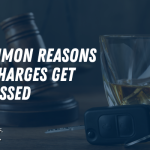crucial for individuals to take proactive steps following such incidents. Promptly contacting the authorities to document the accident, collecting necessary information such as the other driver’s details, and gathering evidence can significantly aid in expediting the insurance claim process. Taking these initial steps ensures that one’s interests are protected, and it facilitates a smoother resolution of the incident, potentially reducing any unnecessary delays or complications in getting the damages addressed.
Regrettably, an issue in today’s society is the prevalence of dishonest individuals who either fail to report accidents to their insurance provider or, in some cases, do not possess insurance coverage. Consequently, this situation often leaves victims uncertain about whether they should tell their insurance company, even when they’re clearly not at fault in an accident.
Should I File A Claim With My Insurance If I’m Not At Fault?
Absolutely, it’s imperative to contact your insurance provider after an accident, even if it’s clearly not your fault. Despite any agreements or offers made by the other party to cover the damages privately without involving insurance, it’s crucial to report all accidents to your insurer.
Reporting the accident, even though it wasn’t your fault, ensures transparency and compliance with your policy terms. Even if you opt not to make a claim through your insurance, informing them about the incident is vital for your claims history. When switching car insurance providers in the future, you’ll likely be asked about your claims history. Accurately disclosing all accidents, both at-fault and non-fault, maintains your integrity and ensures you’re providing the comprehensive information required by insurers. This practice establishes a transparent and consistent record, supporting a smoother transition between insurance companies while maintaining your credibility as a policyholder.
Do You Have To Report An Accident To Your Insurance If It’s Not Your Fault?
Absolutely, having car insurance is a fundamental requirement when driving, with all states mandating minimum liability coverage for every driver. Las Vegas, Nevada is no exception to these rules and regulations. In Nevada, including Las Vegas, automobile liability insurance policies are mandated to provide a minimum coverage of $25,000 for bodily injury or death of one person in any single accident, $50,000 for bodily injury or death of two or more persons in any one accident, and $20,000 for injury to or destruction of property of others in any one accident.
Even if you lack insurance to cover your own vehicle’s damages in an accident, you’re still required to carry insurance that covers another motorist’s injuries if you’re at fault. Failure to have this coverage can result in significant fines and potential out-of-pocket expenses to compensate for damages caused to another driver.
When involved in a car accident where you’re not at fault, the other driver’s insurance is expected to cover your damages. However, if they lack insurance or there are issues with their coverage, seeking compensation might require action from your own insurance provider. Many insurance companies refrain from assisting unless a claim has been filed, even if you were not at fault. Therefore, it’s essential to take the necessary legal steps to secure insurance coverage for your damages by contacting both your insurer and the other driver’s insurer if needed. This proactive approach ensures you explore all potential avenues for compensation, safeguarding your rights and ensuring your damages are appropriately addressed.
What Happens When I File A Claim For An Accident That Wasn’t My Fault?
When filing a claim for an accident that wasn’t your fault, it’s essential to report it to your insurer promptly, following the same procedure as any other accident claim according to your policy’s guidelines. Honesty and providing comprehensive information are crucial during this process.
However, it’s important to note that even non-fault claims can lead to increased car insurance costs, albeit less significantly compared to at-fault claims. Some insurers may raise premiums by up to 30% for one non-fault claim and up to 50% for two non-fault claims. Moreover, when switching insurers, be prepared for the new provider to request your claims history, which can extend as far back as five years.
While you might still be responsible for paying the excess despite not causing the accident, there are rare instances where the other driver admits fault to their insurer, potentially exempting you from the excess payment. However, this outcome is uncommon. Ultimately, your insurer may refund the excess once they confirm and prove you weren’t at fault in the incident.
What Do I Do After Being In A Car Accident That Wasn’t My Fault?
When an innocent driver finds themselves in a car accident that wasn’t their fault, it’s crucial to follow a set of steps to ensure their safety and protect their interests. First and foremost, prioritize safety by activating hazard lights and moving the vehicle out of traffic, checking for injuries among all occupants, and if necessary, calling emergency services. While it’s essential to stay at the scene, never admit fault or make statements that could be misconstrued as an admission of responsibility. After securing safety, the next steps are vital:
- Seek Medical Attention – Even without apparent injuries, seeking medical evaluation after an accident is advised. Some injuries may not immediately manifest, and timely medical attention ensures potential issues are addressed. Document any symptoms experienced post-accident and maintain accurate medical records to support your injury claim, should it be necessary.
- Notify the Police – Regardless of the accident’s severity, contacting the police is essential. A police report becomes a crucial document for insurance claims, offering detailed information on the accident’s time, location, involved parties, and eyewitness accounts. Insurance companies often require this report to process a claim, establishing the victim’s innocence.
- Gather Evidence and Information – Exchange information with all involved drivers, including names, contact details, insurance provider information, and vehicle details. Additionally, document the scene with photographs, noting damages, skid marks, and surroundings. Collect witness information, as their accounts could corroborate your version of events in case the at-fault driver fails to report the accident to their insurer.
- Be Cautious with Statements – Avoid discussing fault or making statements that could be used against you by insurance companies. Statements admitting a lack of visibility or apologizing might be misconstrued and could compromise your claim. Remaining cautious about what you say can protect your compensation claim from potential disputes or delays.
- Notify Your Insurance Company – Contact your insurance provider, even if the accident wasn’t your fault. While the at-fault driver’s insurer might compensate for damages, sometimes disputes arise, necessitating your insurer’s involvement. Your insurer may need your account of the incident and any supporting evidence to advocate for your innocence.
Following these steps safeguards your well-being, ensures a comprehensive record of the incident, and protects your rights when dealing with insurance claims arising from an accident that wasn’t your fault.



